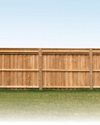
Some tile jobs require only straight, simple cuts. But most require some tricky ones: curves, holes for plumbing, or cutouts for electrical boxes. That’s when an angle grinder comes in handy. This article shows you how to use an inexpensive angle grinder with a diamond blade to cut perfect circles and squares in even the toughest tile, like granite or porcelain. You can buy a 4-in. or a 4-1/2-in. grinder for less than $60 and a dry-cut diamond blade to fit it starting at $15. In general, more expensive blades last longer.
When you’re choosing a diamond blade, look for one with a continuous, rather than segmented, rim for the smoothest cut. Be aware, though, that cutting with a dry-cut diamond blade creates a lot of dust and noise. So make sure you cut in a well-ventilated area (or better yet, outside!) and wear hearing protection, a good-quality two-strap dust mask and safety glasses.
TILT THE BLADE FOR CIRCLES
This story is from the {{IssueName}} edition of {{MagazineName}}.
Start your 7-day Magzter GOLD free trial to access thousands of curated premium stories, and 9,000+ magazines and newspapers.
Already a subscriber ? Sign In
This story is from the {{IssueName}} edition of {{MagazineName}}.
Start your 7-day Magzter GOLD free trial to access thousands of curated premium stories, and 9,000+ magazines and newspapers.
Already a subscriber? Sign In

7 Bicycle Maintenance Tips
Keep your bike in tiptop shape and ride safe!

SETTING FENCE POSTS WITH EXPANDING FOAM
Any fence builder knows you need strong posts for a strong fence, and that means backfilling the postholes with a dense, hard material other than dirt.

PEBBLE MOSAIC STEPPING STONES
COLLECT SOME RIVER ROCK AND MAKE YOUR OWN UNIQUE STEPPINGSTONE PATH

EARTH-FRIENDLY WEED KILLERS
HEALTHIER CHOICES FOR HUMANS AND THE ENVIRONMENT

DIY! HYDROPONIC GARDEN
FRESH VEGETABLES AT YOUR FINGERTIPS

GROW MINI VEGETABLES
GROW A GARDEN IN A TINY SPACE!

BUILD A VERTICAL GARDEN
TIME TO GROW UP!

MODERN WATER FOUNTAINS
A SPLASH OF PEACE FOR YOUR PATIO

9 ALTERNATIVE USES FOR SAWDUST
Every fully stocked wood shop has a table saw. You can usually find a pile of sawdust under it, even if it's used only occasionally. If a shop has a belt sander or band saw, there's probably another pile of finer sawdust under that. Even people without stationary tools have sawdust accumulation on their workbenches.

INSULATE WITH FOAM
IT'S A GREAT ALTERNATIVE TO FIBERGLASS